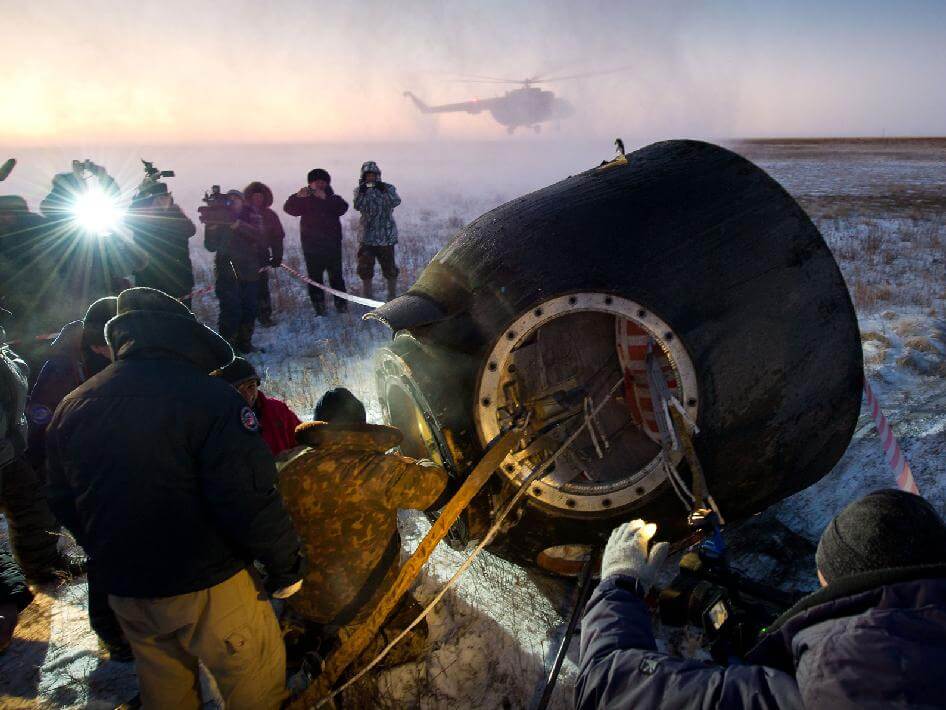Their entry into the atmosphere was photographed quite rarely by the crew remaining on the International Space Station

The three members of the 29th crew of the space station have landed safely after six months on the International Space Station. They landed in the ice steppes of central Kazakhstan in the early hours of Tuesday morning Kazakhstan time. Their entry into the atmosphere was photographed quite rarely by the crew remaining on the International Space Station. Even from the ground it was possible to notice the fireworks display created by the Soyuz upon entering the atmosphere.
29th crew chief Mike Possum, flight engineers Satoshi Furukawa and Sergey Volkov arrived at the space station on June 9, spending 167 days in space, including 165 days on the space station. During their stay, the crew noted 11 years of continuous manning of the space station, and experienced the risk of abandoning the station in August after the failure of the launch of Progress model supply spacecraft.
However, a successful launch of a replacement Progress spacecraft on October 30 paved the way for the launch of new crew members on November 14. Before they left the station, Possum turned command over to Team 30 Commander Dan Burbank of NASA.
Along with Burbank, Anatoly Ivanyshyn and Anton Shkalarov from Russia are now at the station, who will continue research and maintenance of the station.
